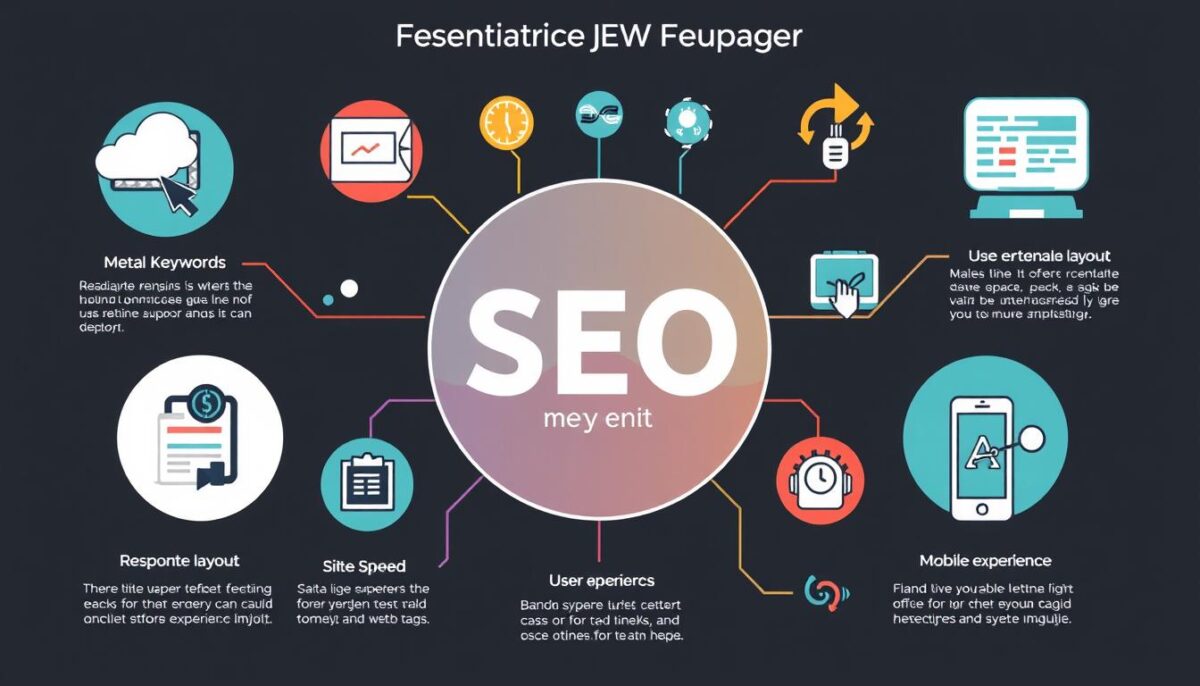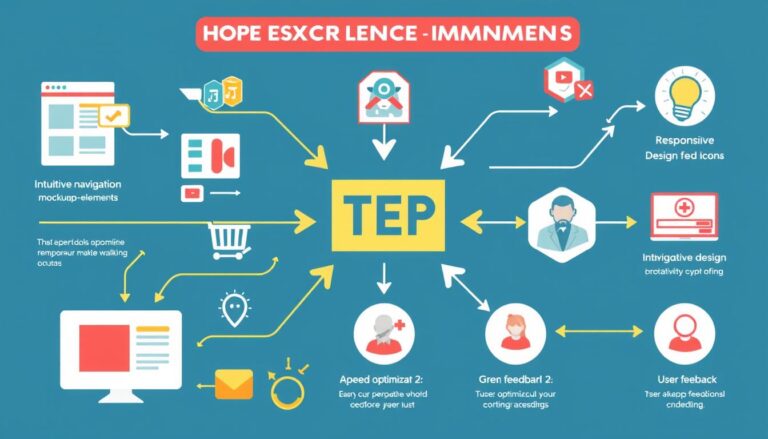What Web Designers Need To Know About SEO
As the digital landscape continues to evolve, the intersection of SEO for web designers and aesthetic appeal is becoming increasingly crucial. It’s no longer sufficient for websites to be visually stunning; they must also be functional and easily discoverable by search engines. This article will explore how web design and SEO are interlinked, emphasizing the importance of integrating SEO basics for designers into the creative process. With industry trends showing that effective SEO strategies can significantly enhance user experience and site visibility, designers must embrace SEO principles to create websites that are not only attractive but also perform well.
Understanding the Basics of SEO for Web Designers
For web designers, understanding the definition of SEO forms the foundation of creating effective websites. SEO, or Search Engine Optimization, is the practice of enhancing a website to achieve higher rankings in search engine results pages (SERPs). This not only increases search engine visibility but also maximizes the potential for organic traffic. Grasping the core SEO components, such as keyword research, on-page optimization, off-page factors, and technical SEO, is essential for successful web design.
What is SEO?
The significance of SEO lies in its function to improve a site’s discoverability and usability. Search engines operate through complex algorithms that analyze numerous factors to determine the relevance and quality of web pages. Understanding how these algorithms work aids designers in crafting content that aligns with search intent. Incorporating the best SEO practices builds a strong connection between the website’s objectives and user expectations. Familiar resources, such as Google’s Search Quality Evaluator Guidelines, provide valuable insights that help shape a comprehensive SEO strategy.
Why SEO Matters for Web Design
The importance of SEO for web designers cannot be overstated. Implementing effective SEO strategies enhances user experience, which in turn fosters higher engagement and lower bounce rates. As organic traffic increases, so do conversion rates, leading to long-term benefits from skilled optimization. Studies from prominent platforms like Moz and SEMrush underline the benefits of SEO for web designers, illustrating how good design and SEO work synergistically to improve overall site performance.

| SEO Components | Impact on Web Design | Benefits of SEO |
|---|---|---|
| Keyword Research | Guides content structure and navigation | Increased search engine visibility |
| On-Page Optimization | Improves page relevance and load time | Higher engagement rates |
| Technical SEO | Ensures website functionality and accessibility | Better user experience |
| Off-Page Factors | Affects brand authority and trust | Increased organic traffic |
What Web Designers Need To Know About SEO
Understanding the distinction between on-page SEO and off-page SEO is crucial for web designers aiming to create effective online presences. On-page SEO involves the elements that can be directly controlled within a website, such as HTML tags, metadata, and content quality. Off-page SEO pertains to factors that happen outside your control but still impact search rankings, including backlinks and social media signals.
On-Page vs. Off-Page SEO
On-page SEO provides web designers with the opportunity to optimize content and improve user experience. Key aspects include:
- Utilizing descriptive title tags and meta descriptions.
- Incorporating header tags to structure content effectively.
- Optimizing images with alt text to enhance accessibility and relevance.
- Creating internal links to guide users and search engines to related content.
On the flip side, off-page SEO focuses on external factors that can influence a site’s authority. While designers might not directly manage these, understanding their significance helps in collaborating with marketers:
- Building quality backlinks from reputable sites to enhance trustworthiness.
- Engaging with social media platforms to boost visibility and traffic.
Essential SEO Elements to Incorporate in Design
Implementing critical SEO elements for design fosters optimization. Some SEO techniques for designers to consider include:
- Utilizing responsive design to ensure mobile-friendliness, which is a cornerstone of SEO best practices.
- Employing clean URL structures that make navigation intuitive.
- Ensuring fast loading speeds, as site performance significantly influences both user experience and search rankings.

Leveraging effective SEO elements within a design helps create a seamless user experience without compromising aesthetics. In fact, leading platforms like Shopify and Wix exemplify how to blend attractive visuals with effective technical SEO. By following these strategies, web designers can enhance their projects’ visibility and achieve better search engine results while adhering to SEO best practices.
SEO-Friendly Design Techniques
Creating a website that not only attracts visitors but keeps them engaged remains crucial. Implementing SEO-friendly design techniques enhances both the SEO and user experience. Three significant aspects include mobile-friendly design, site speed, and clean URL structures.
Creating Responsive and Mobile-Friendly Websites
Responsive web design ensures that websites adapt seamlessly to various screen sizes. Techniques such as fluid grids, flexible images, and CSS media queries contribute to a positive experience across devices. Google prioritizes mobile-friendly websites, as it uses a Mobile-First Indexing approach for rankings. This shift emphasizes the impact of mobile design on SEO and user experience. Websites should aim for optimal readability and accessibility, enabling users to navigate without difficulty.
Importance of Site Speed and Performance
The direct correlation between site speed and user experience cannot be overlooked. A fast-loading site enhances website performance and minimizes bounce rates. Tools like Google’s PageSpeed Insights and GTmetrix provide essential metrics to analyze loading times. Strategies for improving site speed include:
- Image compression
- Reducing server response times
- Leveraging browser caching
These measures address the SEO impact of site speed, reinforcing the need for swift access to content that retains user interest.
Utilizing Clean URL Structures
Clean URL structures play a vital role in successful SEO strategies. Descriptive and concise URLs enhance navigation and increase the likelihood of higher rankings. URL optimization best practices include:
- Incorporating relevant keywords
- Avoiding special characters
- Maintaining brevity in URLs
When URLs are organized logically, both users and search engines interpret them effectively, creating a structured site hierarchy. SEO-friendly URLs contribute to improved visibility in search results.
Tools and Resources for SEO in Web Design
For web designers looking to enhance their SEO efforts, a variety of powerful SEO tools are available to streamline the process. Yoast SEO is an invaluable plugin for WordPress users that provides real-time content analysis, helping designers integrate effective SEO practices directly into their design workflow. Similarly, Google Search Console offers insights into website performance, allowing designers to monitor and resolve issues that might affect search engine visibility.
SEMrush is another comprehensive tool that assists web designers with keyword research and competitive analysis. By leveraging its extensive database, designers can identify the most relevant keywords for their projects, optimizing content during the design phase itself. Moreover, incorporating these resources for web designers helps in keeping track of SEO metrics and adjustments, ensuring that all aspects of the site remain aligned with best practices.
To continue evolving in the dynamic realm of SEO, web designers should consider enrolling in online courses available on platforms like Coursera, where industry experts teach essential skills. Additionally, attending workshops at conferences can provide hands-on learning opportunities and insights from leading professionals. By utilizing these SEO tools and resources, web designers can create well-optimized websites that stand out in search engine results.







